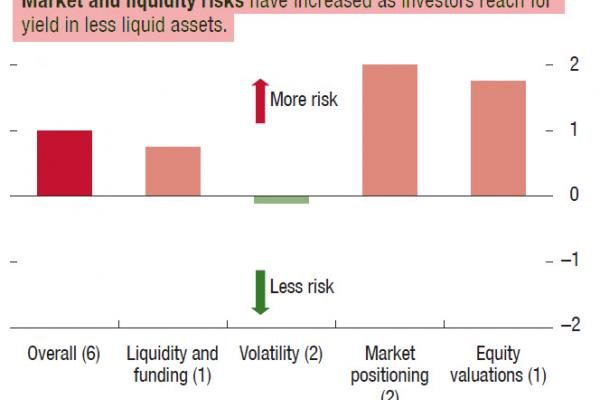The extended period of monetary accommodation and the accompanying search for yield are leading to credit mispricing and asset price pressures, increasing the chance that financial stability risks could derail the recovery.
Â

Â
Concerns have shifted to the shadow banking system, especially the growing share of illiquid credit in mutual fund portfolios.
Should asset markets come under stress, an adverse feedback loop between outflows and asset performance could develop, moving markets from a low- to a high-volatility state, with negative implications for emerging market economies.

Â
Funds investing in credit instruments have a number of features that could result in elevated financial stability risks.
First is a mismatch in liquidity offered by investment funds with redemption terms that may be inconsistent with the liquidity of underlying assets. Many credit funds hold illiquid credit instruments that trade infrequently in thin secondary markets.
Â
Second is the large amount of assets concentrated in the hands of a few managers. This concentration can result in “brand risk,†given that end-investor allocation decisions are increasingly driven by the perceived brand quality of the asset management firm. Sharp drawdowns in one fund of an asset manager could propagate redemptions across funds for that particular asset manager if its brand reputation is damaged, for example through illiquidity or large losses.
Â
Third is the concentration of decision making across funds of an individual fund manager, which can reduce diversification benefits, increase brand risk, or both.
Â
Fourth is the concentrated holdings of individual issuers, which can exacerbate price adjustments.
Â
Fifth is the rise in retail participation, which can increase the tendency to follow the herd.
These features could exacerbate the feedback loop between negative fund performance and outflows from the sector, leading to further pressure on prices and the risk of runs on funds. These risks could become more prominent in the coming year as the monetary policy tightening cycle begins to gain traction.

